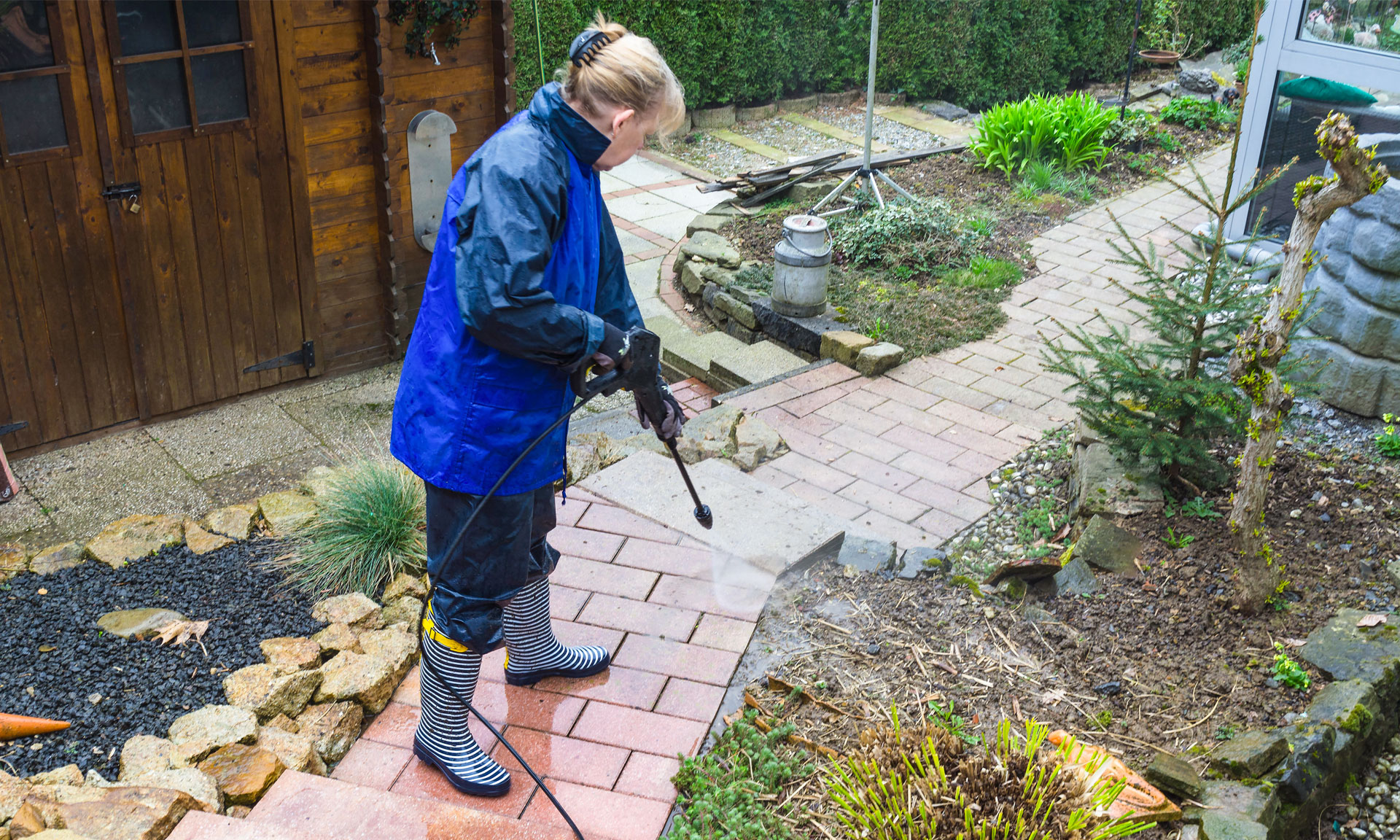
If you’ve ever pressure washed your driveway or patio and seen muddy water flood toward your flower beds, you’ve probably asked yourself:
“Is pressure washing safe for my landscaping?” 🌿
It’s a valid concern. Pressure washing is incredibly effective at cleaning grime, mildew, and stains—but it’s also powerful enough to disrupt delicate areas around your yard, especially your garden beds and landscaping features. If done carelessly, it can flatten flowers, rip up mulch, or even contaminate your soil with chemical runoff.
So let’s dive into how pressure washing interacts with your landscaping and what steps you can take to protect your green spaces before, during, and after a clean.
🌺 The Risks Pressure Washing Poses to Landscaping
Though pressure washers are great tools, they aren’t exactly gentle. Here’s how they can negatively impact your landscaping if you’re not careful:
🚿 1. Water Pressure Damage
The sheer force of water can:
- Snap stems of delicate flowers or plants 🌸
- Uproot soil or mulch, creating erosion
- Knock over potted plants, lawn decor, or small garden structures
- Destroy new sod or tender grass shoots 🌱
Even at lower pressure settings, too much concentrated force near garden edges can cause unintended harm.
🧴 2. Chemical Runoff
Many people use detergents or degreasers when pressure washing siding, concrete, or outdoor furniture. These cleaning agents often contain:
- Bleach or chlorine
- Solvents
- Surfactants or degreasers
If the runoff seeps into your soil or drains into your flower beds, it can:
- Kill beneficial microbes
- Burn plant roots
- Cause leaf spotting or discoloration
- Leave behind chemical residues in the soil 💀🌻
🧱 3. Soil Compaction or Displacement
High-powered water streams can erode the topsoil, pushing nutrients away or compacting dirt where water pools—especially in raised beds or sloped gardens. This disrupts root health and water retention over time.
🛡️ How to Protect Your Landscaping While Pressure Washing
Now that you know what can go wrong, here’s how to pressure wash without waging war on your garden:
✅ 1. Cover Your Plants
Use plastic sheeting, painter’s tarps, or breathable landscape fabric to shield garden beds and ornamental shrubs. Make sure the cover is gently staked or weighted down—not tied tightly around stems.
🪴 Bonus tip: Covering your plants can also prevent soil splash, which reduces disease spread on leaves.
✅ 2. Use Eco-Friendly Detergents
Choose biodegradable, plant-safe cleaners made specifically for outdoor surfaces. Look for labels that say:
- Non-toxic
- Phosphate-free
- Safe for lawns or landscaping
🌿 These are less likely to harm nearby greenery if a bit of runoff reaches the soil.
Browse Amazon Here For Eco-Friendly Pressure Washing Detergents
✅ 3. Redirect Runoff
Plan your pressure washing so that dirty water flows away from garden beds. Use:
- Boards or bricks to create runoff barriers
- Temporary drainage ditches or trenches
- Absorbent mats or towels at the garden edge to slow water flow
This is especially important on sloped terrain where gravity can pull soap and dirt right into your mulch beds. 🚧
✅ 4. Rinse Everything Down Afterwards
After pressure washing:
- Use a gentle spray from a hose to rinse any overspray off nearby plants
- Flush the soil lightly if you suspect any soap has entered the bed
- Replace displaced mulch or soil to restore moisture control
🧼 Tip: Don’t forget to clean garden statues, rocks, or edging that may have gotten dirty during the wash.
🧠 Should You Pressure Wash Near Gardens at All?
Yes—but with caution. If you’re working near:
- Raised flower beds 🌸
- Edible plants like herbs or veggies 🌿🍅
- Water features with fish 🐟
- Decorative gravel or soft mulch paths
…then proceed slowly and thoughtfully. You may want to:
- Lower the PSI
- Use a wider nozzle tip (25° or 40°) for gentler spray
- Pressure wash in shorter bursts to control direction and runoff
You can also use a surface cleaner attachment to help contain splashing and minimize soil disruption.
🪻 Landscaping-Safe Zones to Pressure Wash
The safest surfaces to pressure wash near landscaping include:
- Stone or concrete walkways with edging
- Decks with solid railing barriers
- Patios with strategic slope away from garden beds
- Driveways leading to the street with no direct runoff path into soil
In these areas, a little splash-back won’t hurt as long as you’ve taken some basic precautions.
🧽 Final Thoughts
So, how does pressure washing affect landscaping and garden beds?
If done carelessly, it can do more harm than good. But with the right protective steps, you can clean your home’s exterior without sacrificing your hard-earned blooms.
To recap:
- 💦 Use wide-angle nozzles and keep your distance
- 🧴 Choose plant-safe, eco-friendly cleaners
- 🛡️ Cover and protect sensitive areas
- 🚧 Redirect or contain runoff
- 🌱 Rinse and restore after the job is done
Your garden deserves just as much care as your home’s siding or patio. With a little planning, you can keep both sparkling clean and healthy. 🌸✨
Browse Amazon Here For Top Rated Power Washers And Accessories






